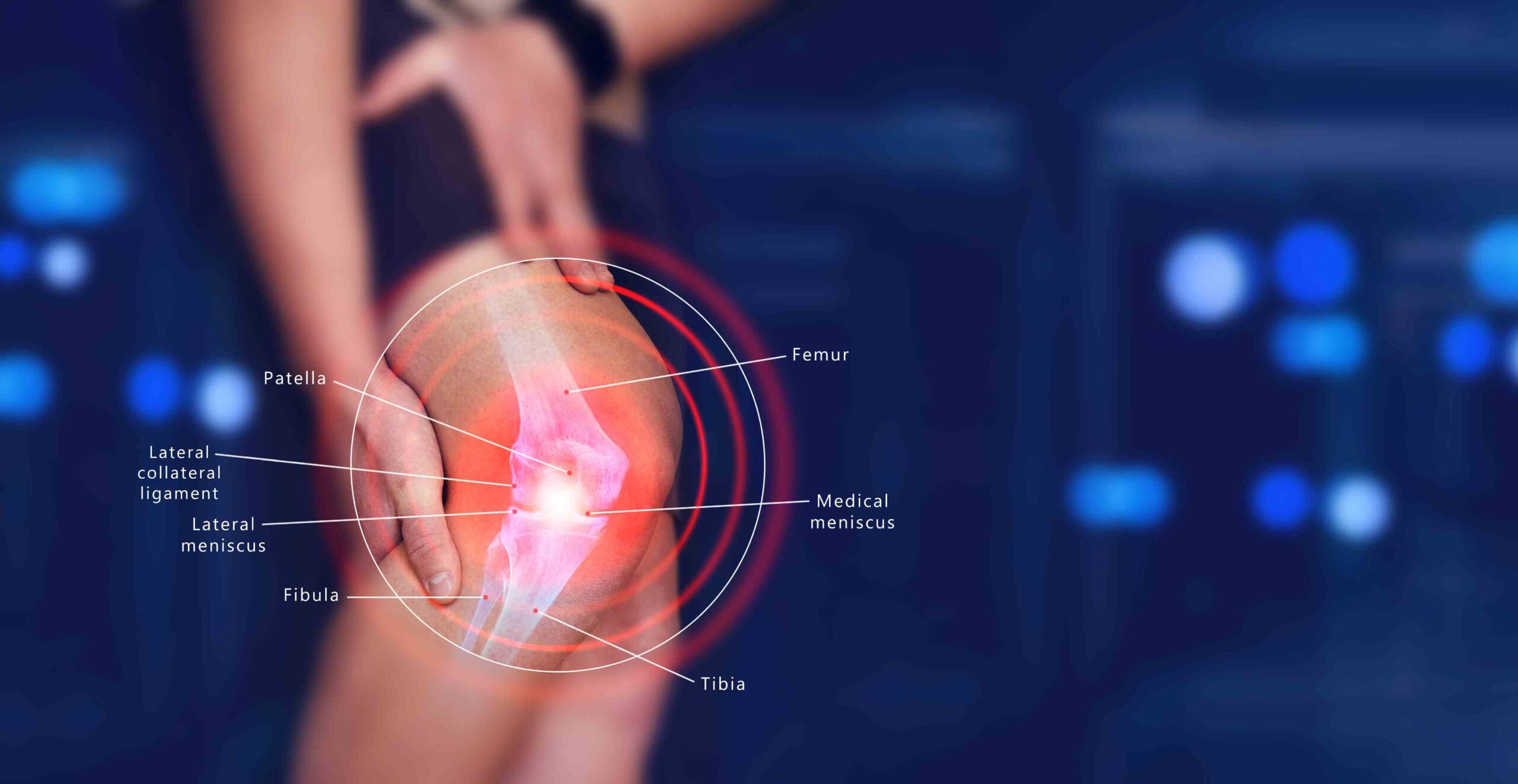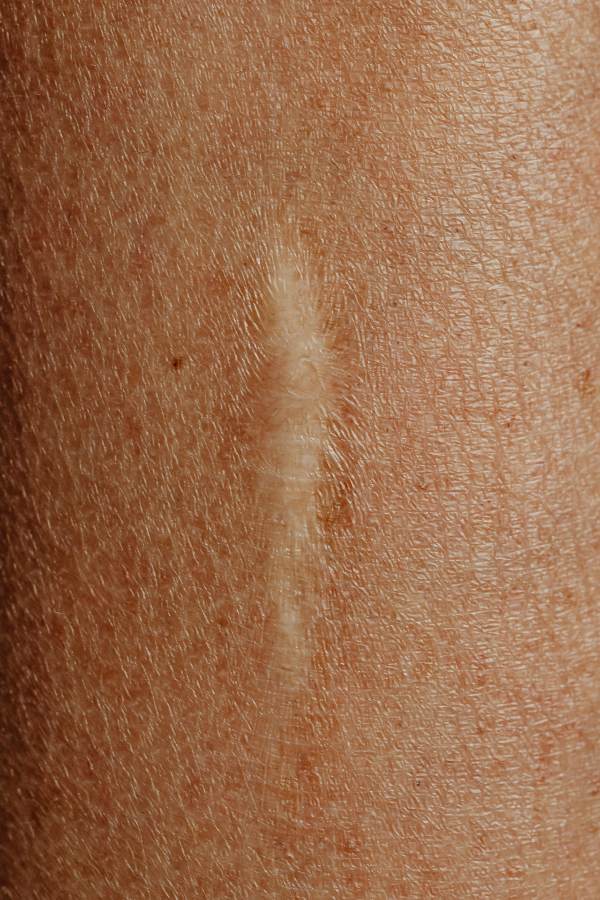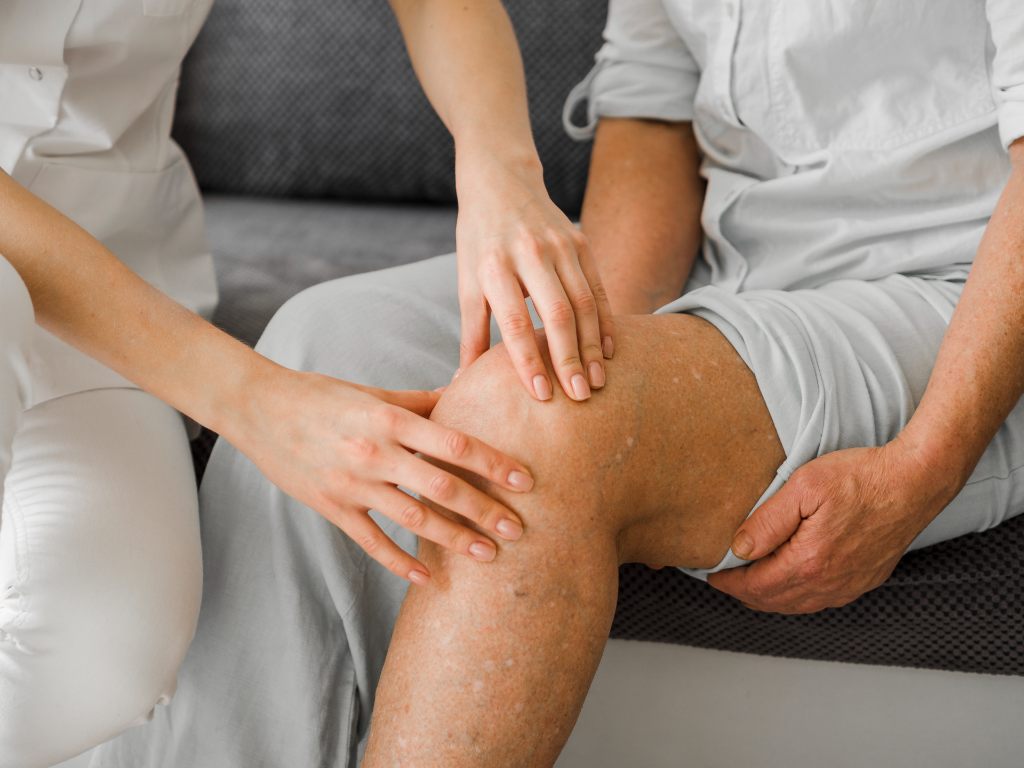Knee pain is a common issue that can significantly affect one’s quality of life, impacting daily activities such as walking, climbing stairs, and even sitting. Understanding the type of knee pain you are experiencing, whether it is lateral (outer side) or medial (inner side), is essential for effective treatment and management. Early diagnosis and appropriate treatment are vital to prevent further complications and ensure optimal recovery.
What Is Lateral Knee Pain?
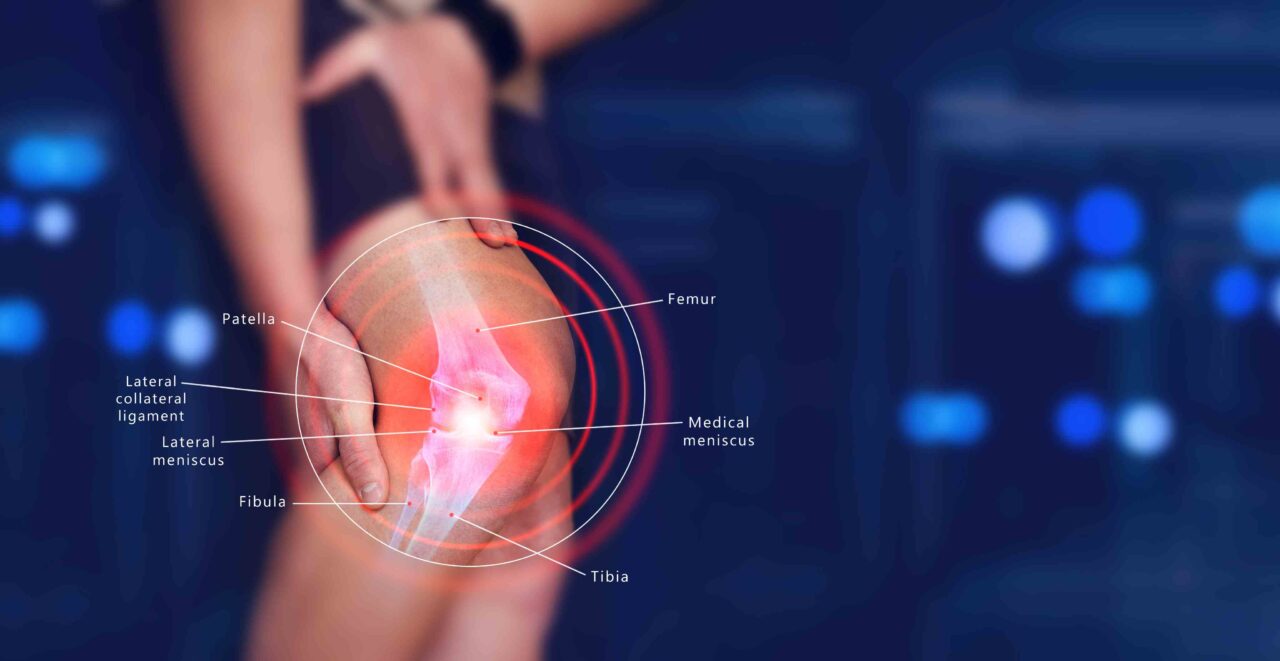
Lateral knee pain refers to discomfort or pain experienced on the outer side of the knee. This type of pain can arise from several causes, each affecting different structures in the knee. Here are the common causes of lateral knee pain:
Iliotibial Band Syndrome (ITBS)
ITBS is a condition where the iliotibial band, a thick band of connective tissue running from the hip to the shin, becomes tight or inflamed. This band can rub against the outer part of the knee, causing irritation and pain, especially in activities involving repetitive knee movement, such as running or cycling.
Lateral Meniscus Tear
The lateral meniscus is a C-shaped piece of cartilage that cushions the outer part of the knee joint. A tear in the lateral meniscus can occur due to sudden twisting motions or degenerative changes over time. This tear can lead to pain, swelling, and difficulty moving the knee.
Lateral Collateral Ligament (LCL) Injury
The LCL is a ligament located on the outer side of the knee that helps stabilize the joint. An injury to the LCL, often caused by direct impact or excessive pressure, can result in pain and instability. This is commonly seen in sports-related injuries.
Osteoarthritis
Osteoarthritis is a degenerative joint disease that leads to the breakdown of cartilage in the knee. When osteoarthritis affects the outer part of the knee, it causes lateral knee pain, stiffness, and reduced mobility. This condition is more prevalent in older adults but can also affect younger individuals with a history of knee injuries.
Bursitis
Bursae are small fluid-filled sacs that act as cushions to reduce friction between tissues in the knee. Inflammation of the bursae on the outer side of the knee, often due to overuse or direct trauma, can cause lateral knee pain. This condition is known as bursitis and can result in swelling and tenderness.
New Patient Special
Try SoftWave for just $69 at a clinic near you. No drugs. No surgery. Just relief.
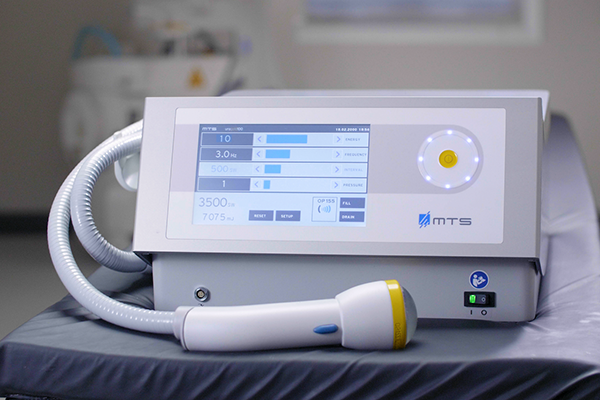
What Is Medial Knee Pain?
Medial knee pain refers to pain experienced on the inner side of the knee. Similar to lateral knee pain, it can be caused by various conditions that affect different structures in the knee. Here are the common causes of medial knee pain:
Medial Meniscus Tear
The medial meniscus is a cartilage cushion located on the inner part of the knee joint. Tears in the medial meniscus can occur due to sudden twisting movements or gradual wear and tear. This leads to pain, swelling, and limited knee function.
Medial Collateral Ligament (MCL) Injury
The MCL is a ligament situated on the inner side of the knee that provides stability. Injuries to the MCL, often resulting from a direct blow or excessive twisting, cause pain, swelling, and instability in the knee.
Pes Anserine Bursitis
The pes anserine bursa is a small fluid-filled sac located on the inner side of the knee, just below the joint. Inflammation of this bursa, known as pes anserine bursitis, can result from overuse, improper training techniques, or direct trauma. This condition causes pain, especially when climbing stairs or rising from a seated position.
Osteoarthritis
Osteoarthritis can also affect the inner side of the knee, leading to medial knee pain. The degeneration of cartilage in this area results in pain, stiffness, and decreased knee mobility, particularly in older adults or those with a history of knee injuries.
Rheumatoid Arthritis
Rheumatoid arthritis is an autoimmune condition that causes chronic inflammation in the joints, including the inner side of the knee. This condition leads to pain, swelling, and stiffness, often affecting both knees symmetrically.
While both lateral and medial knee pain can result from injuries and degenerative conditions, the specific location and structures involved differ. Recognizing these differences is crucial for accurate diagnosis and effective treatment.
Diagnosing Lateral and Medial Knee Pain
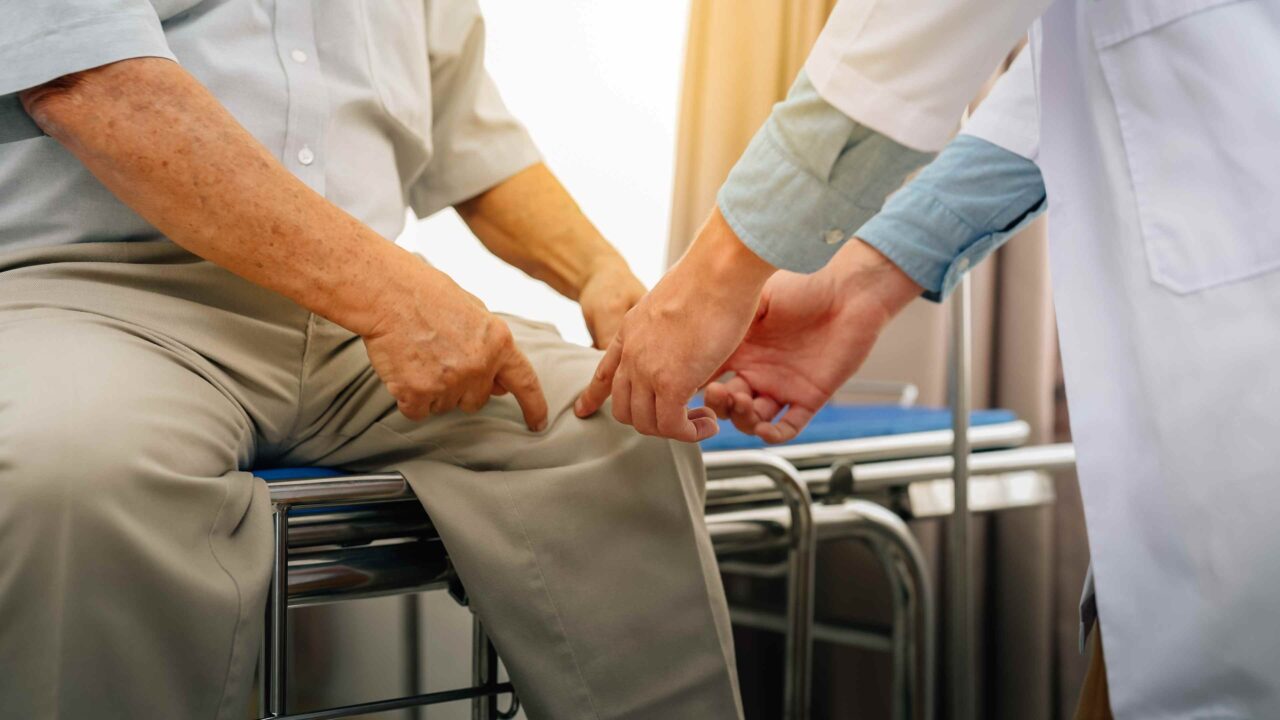
Accurate diagnosis is crucial for effective treatment of knee pain. The diagnostic process typically includes:
- Physical Examination: A thorough physical exam to assess pain, range of motion, and stability of the knee.
- Imaging Tests: X-rays to check for bone abnormalities, and MRI to evaluate soft tissue injuries such as ligament or meniscus tears.
- Patient History: Discussing the patient’s symptoms, activity levels, and any previous injuries to understand the context of the knee pain.
These steps help healthcare providers determine the underlying cause of the pain and develop a tailored treatment plan.
New Patient Special
Try SoftWave for just $69 at a clinic near you. No drugs. No surgery. Just relief.

Medial Vs Lateral Knee Pain Treatments
Treatment options for lateral and medial knee pain may vary depending on the specific cause and severity of the condition. However, several treatments are effective for both types of pain.
Common Treatment Options
- Rest and Activity Modification: Reducing or modifying activities that aggravate the pain is crucial. This might include avoiding high-impact exercises or prolonged standing to allow the knee to heal.
- Physical Therapy: A tailored physical therapy program can help strengthen the muscles around the knee, improve flexibility, and enhance joint stability. Exercises may focus on the quadriceps, hamstrings, and hip muscles to support knee function.
- Medications: Nonsteroidal anti-inflammatory drugs (NSAIDs) such as ibuprofen or naproxen can help reduce pain and inflammation. These medications are useful for managing both acute and chronic knee pain.
- Injections: Corticosteroid injections can provide temporary relief from pain and inflammation. They are often used when pain is severe or does not respond to other treatments.
Specific Treatments for Lateral Knee Pain
- Targeted Exercises for ITBS or LCL Injuries: For Iliotibial Band Syndrome (ITBS), exercises that focus on stretching and strengthening the iliotibial band, hip abductors, and gluteal muscles can be beneficial. For Lateral Collateral Ligament (LCL) injuries, exercises that improve knee stability and proprioception are essential.
- Running Mechanics Improvement: Athletes suffering from lateral knee pain, particularly those with ITBS, may benefit from gait analysis and techniques to improve running mechanics. This might include adjustments to stride length, footwear recommendations, and training modifications.
Specific Treatments for Medial Knee Pain
- Bracing for MCL Injuries: Medial Collateral Ligament (MCL) injuries often require the use of a knee brace to provide support and stability during the healing process. This helps prevent further injury and allows for safe movement.
- Exercises for Pes Anserine Bursitis: Specific exercises targeting the pes anserine muscles (sartorius, gracilis, and semitendinosus) can alleviate pain caused by bursitis. These exercises focus on strengthening and stretching the affected muscles to reduce inflammation and discomfort.
SoftWave Therapy: A Breakthrough in Knee Pain Treatment
SoftWave therapy is an advanced, non-invasive treatment using low-intensity, broad-focused shock waves for knee pain that penetrate deeper and cover a broader area of tissue (up to 7cm x 12cm) compared to other shockwave technologies. This allows for more extensive treatment zones, effectively addressing the root causes of knee pain by enhancing blood flow, modulating inflammation, and promoting tissue regeneration.
The mechanism behind SoftWave therapy involves generating shock waves that trigger the body’s natural healing processes. By improving circulation and reducing inflammation, SoftWave therapy alleviates pain and accelerates the repair of damaged tissues, making it an effective treatment for various knee pain conditions, like lateral and medial knee pain.
The Best Shockwave Therapy for Knee Pain
Are you looking for safe, reliable, and effective relief from knee pain?
SoftWave therapy is FDA-cleared, patented, and nationally recognized for its leading tissue regeneration technology. Unlike other types of high-energy shockwave treatments, SoftWave is the only shockwave therapy on the market that uses true broad-focused shock waves that treat larger and deeper areas of tissue.
Thousands of patients have experienced the benefits of SoftWave for plantar fasciitis, including:
- Little to no side effects
- Short treatment time
- Quick recovery
- Long-lasting results
Find a SoftWave Therapy provider near you or learn more about SoftWave and whether or not you’re eligible for full treatment today!
New Patient Special
Try SoftWave for just $69 at a clinic near you and learn if you’re a candidate for full treatment


